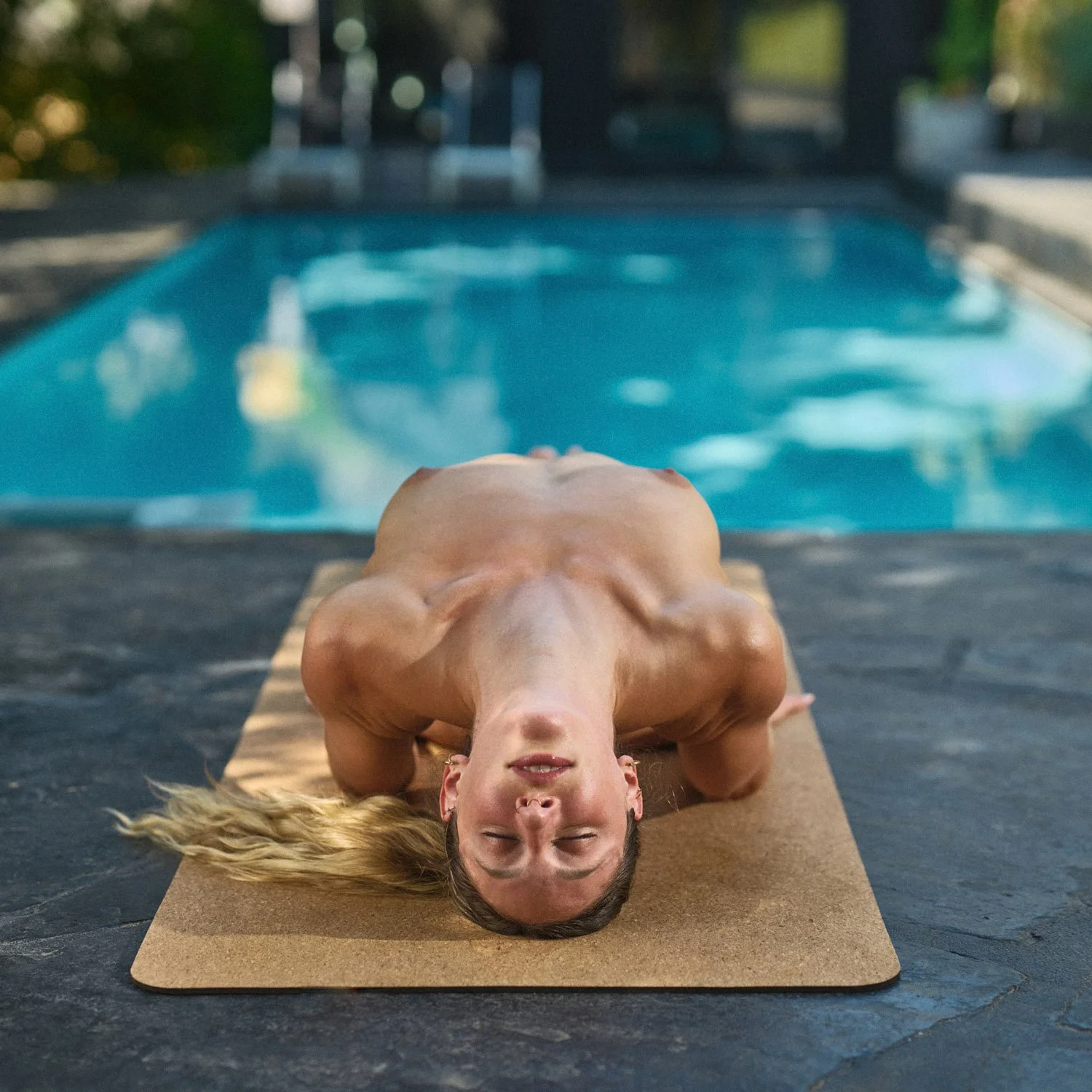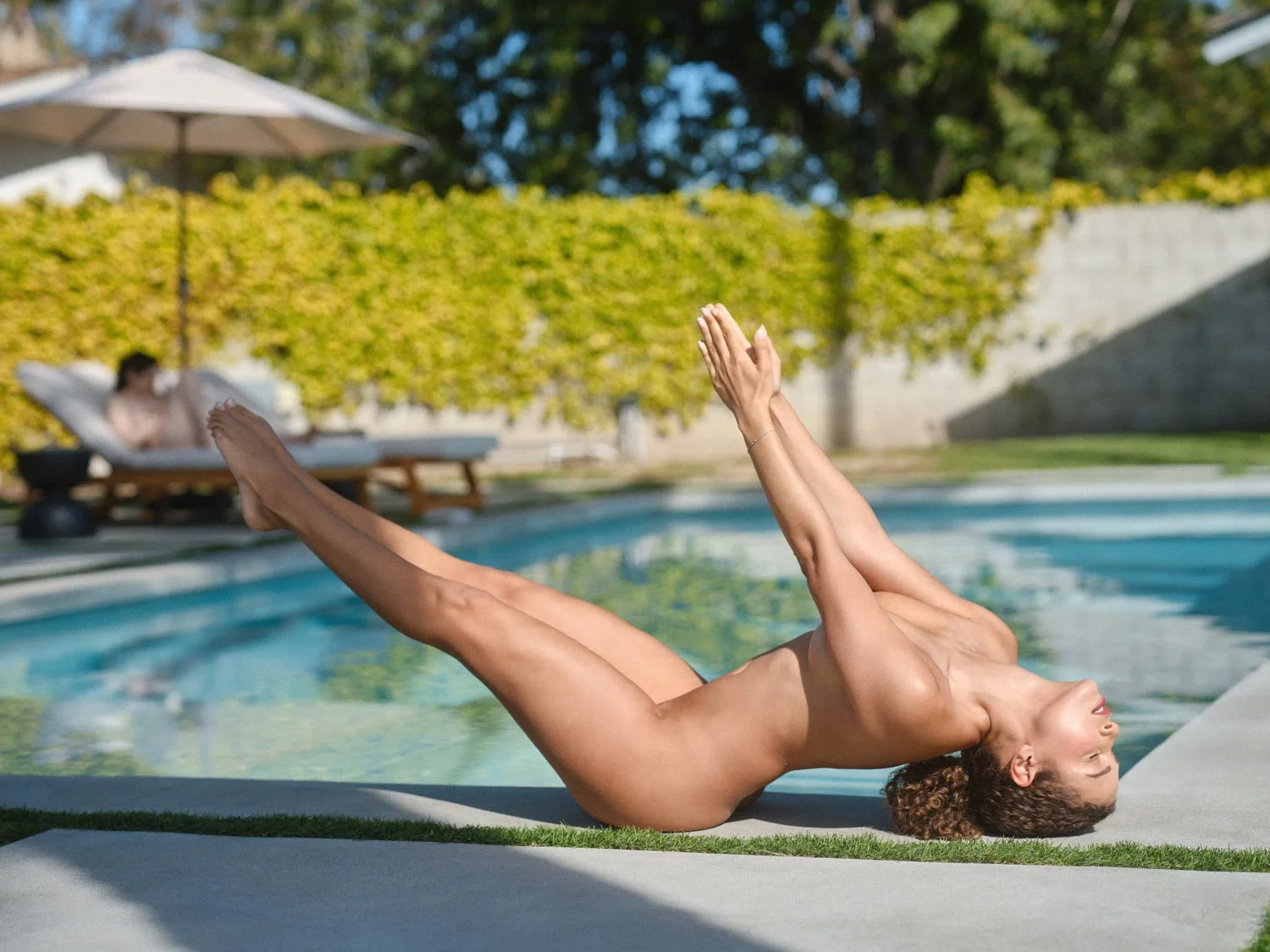Fish Pose
Matsyasana
Teacher: Yasmin
Open your chest and breathe easier with Fish Pose is a refreshing heart opener that counteracts slumped, screen-time posture. Feel energized as you lift through the collarbones, stretch the front body, and awaken calm, steady focus.
Fish Pose or Matsyasana is a buoyant heart opener that lifts the chest, broadens the collarbones, and lengthens the front body from throat to hip flexors. By engaging the upper back and glutes while opening the pecs and intercostals, it helps counter rounded posture from sitting and screen time. Many practitioners also find gentle stimulation around the throat and upper chest supports easier, fuller breathing and a calm, alert state.
Regular practice can improve spinal mobility, relieve tight shoulders, and balance the body after forward folds or core work. In classical yoga sequences, Matsyasana is traditionally paired as a counterpose to Shoulderstand, and some old texts poetically claim a proficient yogi could “float like a fish” in water, a nod to its uplifting, chest-expanding quality.
Fish Pose Steps
Teacher: Juliet
Teacher: Steph
Step 1
Lie Down & Set Up: Lie on your back with legs extended and arms alongside your body, palms down.
Step 2
Prop on Forearms: Bend your elbows, place forearms on the mat, and press down to lift your chest and upper back.
Step 3
Open the Chest: Draw shoulder blades toward each other, broaden the collarbones, and lift the sternum high.
Step 4
Head Placement: Gently tip the head back and lightly rest the crown on the mat, keep most weight in your forearms and elbows, not the neck.
Step 5
Legs & Breath: Press thighs and heels long (or bend knees if preferred). Breathe slowly, feeling the front body lengthen from throat to hip flexors.
Step 6
Exit Safely: Tuck the chin slightly, press into forearms to lift the head, then lower your spine down and release. Hug knees to chest if you like.
Modifications
Supported Fish Pose variation | Teacher: Carissa
Advanced Fish Pose variation | Teacher: Indi
Bolster/Block Support (Supported Fish): Place a bolster lengthwise under your spine (or two blocks—one mid-back, one for head) to open the chest with minimal neck load.
Hands Under Hips: Tuck hands under the buttocks for lower-back support and easier chest lift.
Bent Knees or Cobbler’s Legs: Bend both knees or bring soles together (Supta Baddha Konasana) to reduce low-back strain and open hips.
Advanced Progression: Lift legs to 30–45° and extend arms overhead simultaneously for a strong, active variation.
Advanced Legs: Try Lotus or Half Lotus legs only if knees/hips are pain-free and well-prepared.
Benefits
• Opens chest and improves posture
• Stretches throat, chest, and hip flexors
• Relieves neck and shoulder tension
• Enhances spinal mobility (upper back)
• Promotes deeper breathing
• Counters slouching/screen-time posture
• Boosts energy and mood
Cautions
• Neck or cervical spine injuries
• Recent back/shoulder surgery or acute pain
• Herniated disc or severe osteoporosis
• Uncontrolled high blood pressure or heart issues
• Migraine or dizziness
• Pregnancy (use supported variations only)







